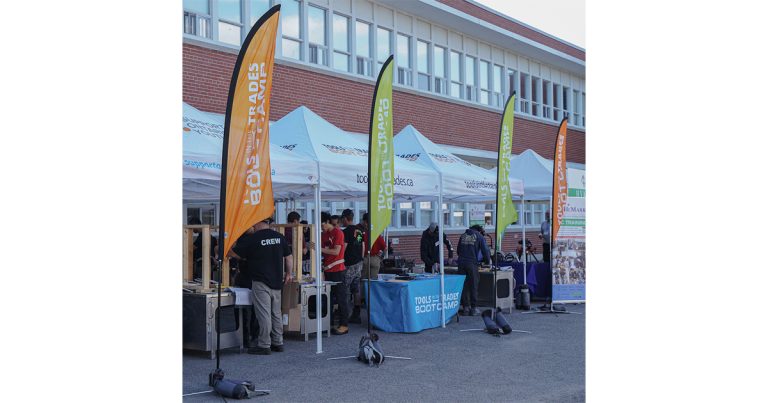EHRC: A Career with Purpose – Apprentices Building Canada’s Reduced Carbon Future

January 31, 2023
By Yoana Turnin, Project Manager, EHRC
In 2021, Canada joined 120+ other countries in committing to achieving net-zero emissions by year 2050 in an effort to “avert the worst impacts of climate change.” In a few words, that means either reducing or offsetting the economy’s greenhouse gas emissions through electrification, energy efficiency and clean technologies. This commitment, along with the changes in the electricity sector workforce composition, present a unique opportunity for young people who are looking for a career with purpose.
Industry outlook
Currently, the electricity and clean technology sectors are facing significant difficulties regarding human resources. From a macro perspective, the low unemployment rate in Canada and exceptionally high job vacancies are indicative of a labour shortage in general. In addition, the sector’s pre-pandemic retirement rate, according to research undertaken by EHRC, a non-profit organization working to strengthen the ability of the Canadian electricity industry to meet the current and future needs of its workforce, is at almost 3%, or 1.5. times the national average for all industries. This number has likely increased due to the pandemic, although the exact impact is not yet determined.
To try to fill this gap quickly, most employers rely extensively on external contractors for core functions at their companies. Additional recruitment is also largely from within the industry, as opposed to accessing new talent pools. All these factors make replacing the existing workforce – while simultaneously achieving industry growth – a significant challenge.
The opportunity
The renewable energy and clean technologies sectors, such as solar and wind power generation, are positioned well to attract young employees. Millennials and Gen Z workers are particularly interested by employment opportunities that they deem meaningful and that allow them to contribute to “something bigger.” However, these groups also tend to lack awareness of how to access opportunities that speak to these intrinsic motivations.
A recent EHRC labour market intelligence study indicated that representation of workers under the age of 25 in the electricity sector remains at 5%, which is lower than the broader Canadian workforce (14%). At the same time, women and individuals who identify with other genders, persons with disabilities, Indigenous peoples, newcomers to Canada, Black and other racialized individuals, and those identifying as 2SLGBTQ+ are under-represented in the sector. This unrealized potential further supports the idea that involving younger generations in the sector, in a way that is cognizant and welcoming of equity, diversity and inclusion (EDI), is of crucial importance for the long-term success of the industry.
The solution
A large percentage of occupations in the electricity industry are technical in nature. As such, apprentices and tradespeople in particular are integral to the industry’s future success. The Government of Canada states that about 700,000 skilled trades workers are expected to retire by 2028. The Canadian Apprenticeship Forum estimates that in order to meet that demand, 75,000 apprentices need to be hired every year for the next five years.
To facilitate sector growth, Employment and Social Development Canada recently launched the Apprenticeship Service program in support of small and medium-sized enterprises (499 employees or less) hiring first-year apprentices in 39 Red Seal trades. This includes construction and industrial electricians, powerline technicians, boilermakers, steamfitters/pipefitters, construction electricians, gasfitters, welders, machinists, tool and die makers and industrial mechanics (millwrights).
Investments in work-integrated learning opportunities, in the form of financial support for employers, certainly provide an incentive to diversify the talent pool. However, additional supports are also needed to improve the participation of equity-deserving groups in skilled trades training and careers and ensure their retention. Examples of such initiatives, delivered by EHRC as one of the Apprenticeship Service providers, are DEI training for employers; professional skills training for participants (focusing on communication, leadership, and problem-solving skills); mentorship; and opportunities for cross-sectoral stakeholder collaboration among employers, educators, labour organizations, government, service providers, and current and potential apprentices.
Complex issues, such as the current labour market challenges, require comprehensive solutions. A holistic approach that fosters supportive and evolving workplaces and creates awareness of opportunities for careers with purpose in the electricity sector is a pressing priority as Canada endeavours to reduce greenhouse gas emissions.
To learn more about EHRC’s Empowering Futures Program, click here.
To apply for EHRC’s wage subsidy programs, click here.










